 Want to see a higher ROI from Facebook?
Want to see a higher ROI from Facebook?
Have you considered Facebook retargeting ads?
Facebook retargeting allows you to reach your website visitors via custom ads on Facebook.
In this article you'll discover recent findings from studies focused on Facebook retargeting.
Why Facebook Retargeting?
While everyone has probably seen Facebook retargeting, not everyone knows how it works.
Have you ever noticed that after visiting a website, suddenly an ad for that site pops up in your Facebook feed or on other websites or a mobile app? When you visited the website initially, it put a code into your browsing history, allowing it to follow you around the web. When you visit a different site or Facebook, the code triggers those sites to show the initial site's ads.

Listen to this article:
Where to subscribe: Apple Podcasts | Spotify | YouTube Music | YouTube | Amazon Music | RSS
Retargeting is an online version of the basic sales and advertising principle of the follow-up. Without retargeting, your website has only one shot to convert. All motivation to go back to it depends strictly on the visitor. As sales and marketing statistics prove, most consumers need more nurturing. Retargeting releases your website from that one static location, freeing it to wander around the Internet, following customers with an enticing ad.
Google had been handling retargeting (which it calls remarketing) for websites for years before Facebook started in 2012. Of course being on Facebook, which nearly every American visits once (if not multiple times) per day, increases the odds of getting your ads in front of someone who is interested in your products or services. Once there, you can even get them to follow you, another bump down the sales funnel.
#1: Marketers Are Increasing Spend on Facebook Retargeting
Companies already engaging in retargeting through Google remarketing are widening their retargeting efforts by adding Facebook to the “inventory” (options for where the ad will appear). In its Facebook by the Numbers 2015 survey of 1,000 marketers, retargeting service AdRoll found significantly increased spend via Facebook.
The year spanning July 2014 to June 2015 showed increased activity and improved results over the same period the previous year. In the United States, B2B companies increased average spend on Facebook retargeting by 51%. Retail companies invested an average of 26% more. Of AdRoll's global customers, the average B2B company increased Facebook retargeting spend by 66%, and the average retail company by 31%.
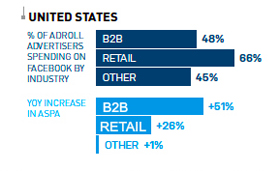
Key Takeaway: With 1.5 billion active users globally now, Facebook user adoption is still racing ahead. From July 2014 to July 2015, Facebook's ad revenue increased by 43%. With its enormous audience, you can narrowly target your ads and still reach a decent number of consumers. You have the opportunity to reach people who not only have indicated a need, but also have already indicated interest in specific, branded products and services.
#2: Increasing ROI Is Driving Retargeting Spend
One of the AdRoll survey's major findings is that running ad campaigns across a variety of Internet channels (websites, Facebook and mobile apps) results in better performance and greater ROI than staying with display ads only.
As the chart below shows, adding Facebook retargeting doubles the static display–ad impression reach, and lowers the cost per click (CPC) by 26% and cost per action (CPA) by 33%.
Get World-Class Marketing Training — All Year Long!
Are you facing doubt, uncertainty, or overwhelm? The Social Media Marketing Society can help.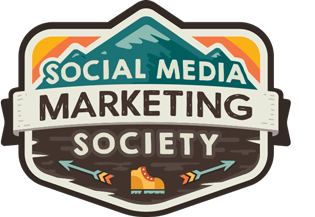
Each month, you’ll receive training from trusted marketing experts, covering everything from AI to organic social marketing. When you join, you’ll also get immediate access to:
- A library of 100+ marketing trainings
- A community of like-minded marketers
- Monthly online community meetups
- Relevant news and trends updates
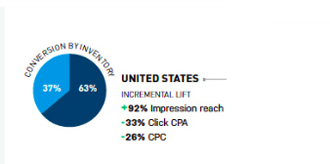
The arrival of B2B advertising on Facebook pushed up retargeting results. While many marketers considered Facebook the domain of B2C, this year B2B got impressive results adding Facebook to their retargeting destinations.
As the chart below shows, on average, B2B companies that spent an additional 60% of their budgets on Facebook retargeting saw an increased click-through rate of 140%. They also reduced cost per click by 11% and cost per action by 42%.
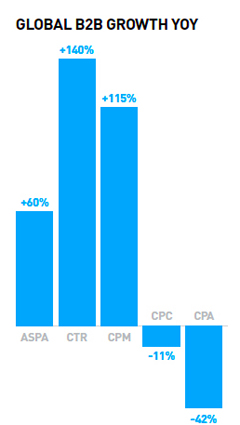
Key Takeaway: It only makes sense that hyper-targeting drives improved click-through rates. Facebook broke the mold when it was able to get ads to audiences with specific interests and living in defined locations.
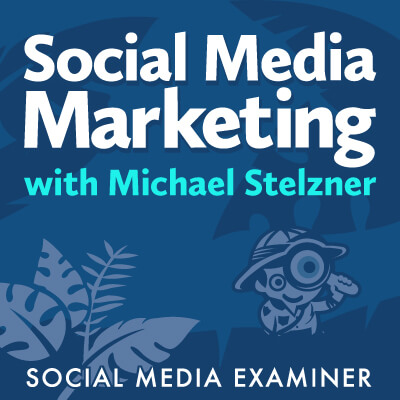
Discover Proven Marketing Strategies and Tips
Want to go even deeper with your marketing? Check out the Social Media Marketing Podcast! Publishing weekly since 2012, the Social Media Marketing Podcast helps you navigate the constantly changing marketing jungle, with expert interviews from marketing pros.
But don’t let the name fool you. This show is about a lot more than just social media marketing. With over 600 episodes and millions of downloads each year, this show has been a trusted source for marketers for well over a decade.
Now, by adding Facebook retargeting, you can put your ads in front of not only local consumers most likely to be interested in your product or service, but also interested local consumers who have visited your website. Because these people have proven interest in your product or service, they're more likely to be far down the funnel and ready to buy.
#3: Mobile Retargeting Provides New Opportunities
Of Facebook's 1.5 billion users, 1.3 billion currently access the platform via mobile. In the United States, Europe and all over the world, more people are accessing Facebook via their smartphones than desktop.
As discussed in a prior research article, digital giant comScore's 2015 study, U.S. Digital Future in Focus reveals that mobile access to the Internet has quadrupled over the past four years, while desktop access has risen a comparably smaller 37%. Many citizens in developing countries use their smartphones in place of a computer.
With social networking as the predominant Internet activity on mobile, it's no wonder Facebook wants to get their ads on those phones.
It was only last year that Facebook engineered the ability to retarget ads on their mobile app. As a dominant remarketing agency, AdRoll was one of the first to take advantage of Facebook mobile retargeting. The company determined that when their advertisers included mobile retargeting with existing desktop campaigns, performance jumped.
Every area that AdRoll monitored reported an increase in impressions and click-through rates. In the United States, impressions jumped by 58%. In Europe, that number was 103%, and in Japan 101%. Cost per click dropped by 35% in the United States and 42% in Europe, but only 6% in Japan.

Key Takeaway: The newness of retargeting on Facebook‘s mobile app gave results a boost. The channel isn't crowded yet, so for now, the ratio of consumers to ads works in your favor. If you're a local business that wants to stand out on mobile, you should consider retargeting soon.
#4: Most Consumers Don't See Retargeting as Intrusive
Over the summer of 2015, Adroit Digital polled 669 U.S. consumers who own both a desktop and a mobile device about their attitudes on being retargeted by companies. Some experts considered retargeting as a form of stalking, and got to the heart of the matter by asking the consumer.
The chart below reveals that only 15% of consumers would feel negative or very negative about seeing an ad for a product they researched three weeks beforehand.
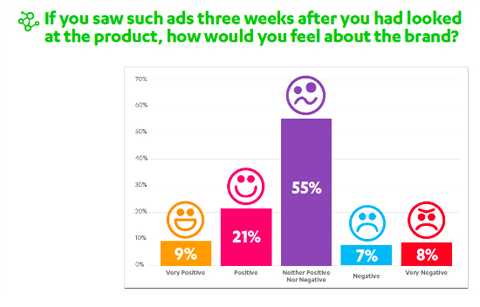
When asked about their reactions after seeing an ad three months after visiting a product website, 19% replied they would be negative or very negative; 81% reported they would feel neutral, positive or very positive; and 17% positive and 8% very positive.
It's interesting to note that 84% of those who bought the product or service reported that they would feel neutral, positive or very positive seeing an ad for the product, with 25% reporting positive and 11% very positive.
Key Takeaway: Retargeting doesn't seem to faze the majority of consumers. When ads are targeted specifically enough, they can be regarded as helpful rather than intrusive.
Conclusion
Follow-up and repetition are critical to sales and marketing success. A common sales maxim states that only 2% of sales close on the first contact. Similarly, advertising research indicates that consumers don't internalize a print ad until they've been exposed to it nine times. Ads on television and radio repeat continuously because it takes multiple exposures to finally connect with viewers or listeners in a meaningful way.
With Facebook retargeting, you have a chance to boost your return on investment. The robust studies mentioned here report higher returns and lower costs per action or click. Some marketers conclude that since the website acts as the always-available digital salesperson, why not give it the freedom to make the follow-up calls that get a prospect to become a client? Look for Facebook retargeting to appear in more studies in 2016.
What do you think? Will your customers convert better with repeated exposure to your offer? Have you had any success or disappointment with Facebook retargeting yet? Please leave your comments and questions below.
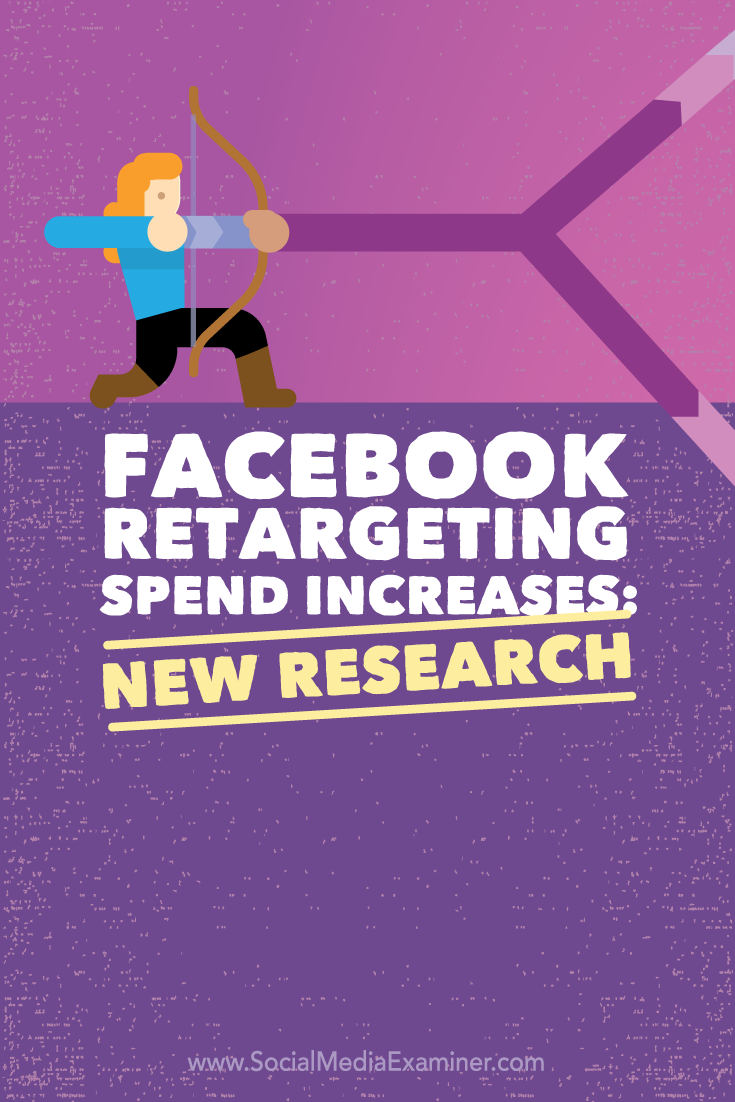
Attention Agency Owners, Brand Marketers, and Consultants
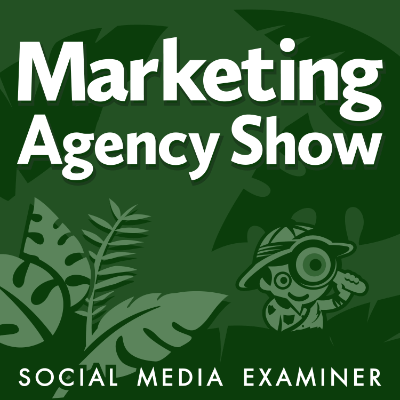
Introducing the Marketing Agency Show–our newest podcast designed to explore the struggles of agency marketers.
Join show host and agency owner, Brooke Sellas, as she interviews agency marketers and digs deep into their biggest challenges. Explore topics like navigating rough economic times, leveraging AI, service diversification, client acquisition, and much more.
Just pull up your favorite podcast app, search for Marketing Agency Show and start listening. Or click the button below for more information.

